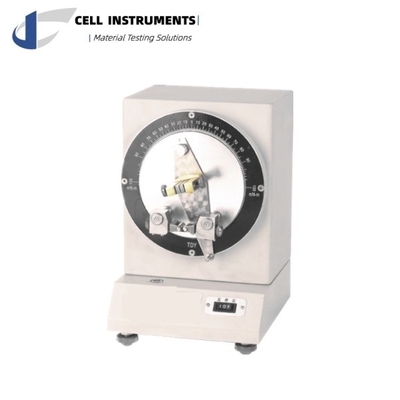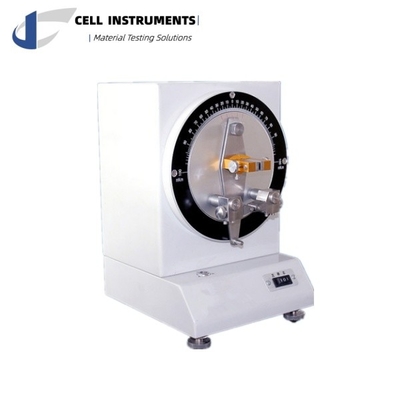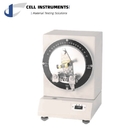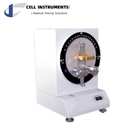WTD-02 Taber Stiffness Tester Bending And Stiffness Testing Equipment for Resistance to Bending of Paper and Paperboard

Contact me for free samples and coupons.
WhatsApp:0086 18588475571
Wechat: 0086 18588475571
Skype: sales10@aixton.com
If you have any concern, we provide 24-hour online help.
x| Test Range | 1~500 MN.m (in 7 Ranges) | Bending Length | 50mm±0.1mm |
|---|---|---|---|
| Testing Speed | (200°±20°)/min | Bending Angle | 15°±0.3° And 7.5°±0.3° |
| 15°±0.3° And 7.5°±0.3° | 38*70 Mm |
Introduction of WTD-02 Taber Stiffness Tester
![]()
It is used to to measure the bending resistance of paper and paperboard by the Taber-type tester.
The method is primarily used for papers with a high grammage. In the test, the bending moment required to deflect the free end of a 38 mm wide vertically clamped specimen by 15° when the load is applied at a bending length of 50 mm, is obtained. For boards that tend to be permanently deformed if bent through 15°, the half bending angle 7.5°, can be used.
The bending resistance is expressed in terms of the bending moment and is expressed in millinewton meters mN·m.
Terms
![]()
- Bending resistance: mean bending moment required to bend a rectangular test piece fastened at one end in a clamp. Bending resistance is expressed in millinewton metres (mN.m)
- Bending length: constant radial distance between the clamp and the position on the test piece at which the force is applied
- Bending angle: angle through which the clamp rotates while moving from its initial position to the position at which the bending resistance is measured. The bending angle is 15° or 7.5°.
- Bending resistance index: bending resistance divided by the grammage to the third power
Test Principle
![]()
A test piece of defined dimensions is bent through a specified bending angle. The resulting bending moment is read from the instrument scale.
Specifications
![]()
The test range of 1~500 mN·m is divided into seven gears, and the division values for each gear are based on the loading weights and the scale values of the force disc, as shown in the table below:
| Test Range(mN·m) | Loading Weights |
Scale Value (mN·m) |
|
| No. | Mass(g) | ||
| 1~5 | 1 | 5.098 | 0.05 |
| 1~10 | 2 | 10.197 | 0.10 |
| 1~20 | 3 | 20.394 | 0.20 |
| 5~50 | 4 | 50.986 | 0.50 |
| 10~100 | 5 | 101.972 | 1.00 |
| 20~200 | 6 | 203.944 | 2.00 |
| 50~500 | 7 | 509.860 | 5.00 |
Parameter:
| Test range | 1~500 mN.m (in 7 ranges) |
| Indication error | ±2% |
| Bending length | 50mm±0.1mm |
| Testing speed | (200°±20°)/min |
| bending angle | 15°±0.3° and 7.5°±0.3° |
| Sample size | 38*70 mm |
| Dimension | 220*230*350mm |
| Net weight | 15kg |
| Power | AC 220V 50Hz |
Standards
![]()
ASTM D5342,ASTM D5650,ASTM D3301, BS ISO 2493.2,ISO 2493.2, JIS P8125.2,TAPPI T489,TAPPI T566, GB/T 2679.3, GB/T 22364
FAQs
![]()
- What kind of paper sample does Taber Bending apply to?
The Taber method is primarily used for papers with a high grammage. - Why is a heat seal tester necessary?
A heat seal tester is essential to determine the optimal combinations of sealing temperature, sealing pressure, and sealing time. These factors significantly impact the efficiency of a sealing machine and the strength of the heat seal. The tester is used to find the best parameters before configuring the sealing machine settings. - What are the key advantages of the HST-01 Heat Seal Tester?
The advantages include PLC control for industrial-level stability, user-friendly operation with an HMI touch screen, aluminum construction for heat retention, precision temperature control, accurate timing with synchronized seal initiation, guided sealing bar for uniform pressure, user safety features, customizable seal jaws, and additional functionalities through connectivity. - What is the test principle of the HST-01 Heat Seal Tester?
The test principle involves placing a sample between two parallel heated sealing jaws. The upper seal jaw, driven by a gas cylinder, exerts pressure on the sample for a specified time. After the preset sealing time, the upper sealing jaw returns to its original position, completing the heat sealability testing process. - What applications is the HST-01 Heat Seal Tester suitable for?
The HST-01 Heat Seal Tester can be used for plastic films, composite plastic films, paper-plastic composites, coextruded films, films with aluminum coatings, aluminum foils, composite films with aluminum foil, plastic tubes, and various other materials. It is versatile and applicable for heat sealing tests on round lids for jelly cups, trays, coffee capsules, etc.






